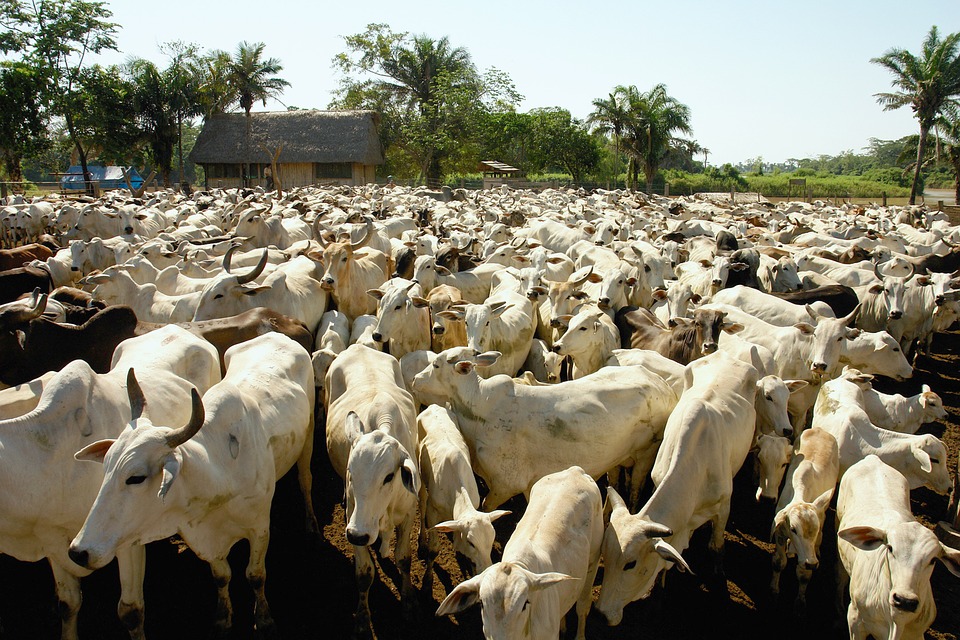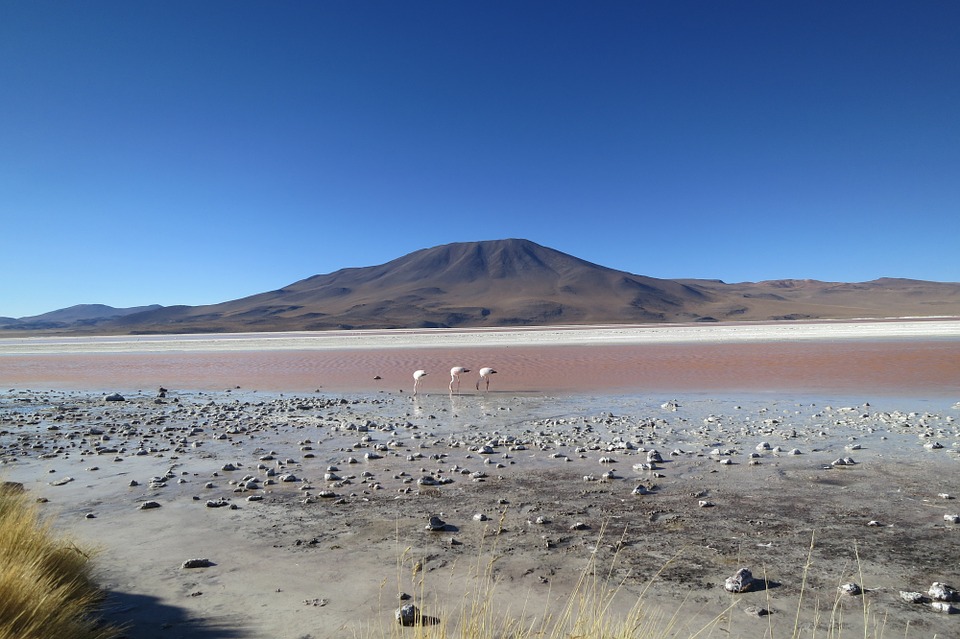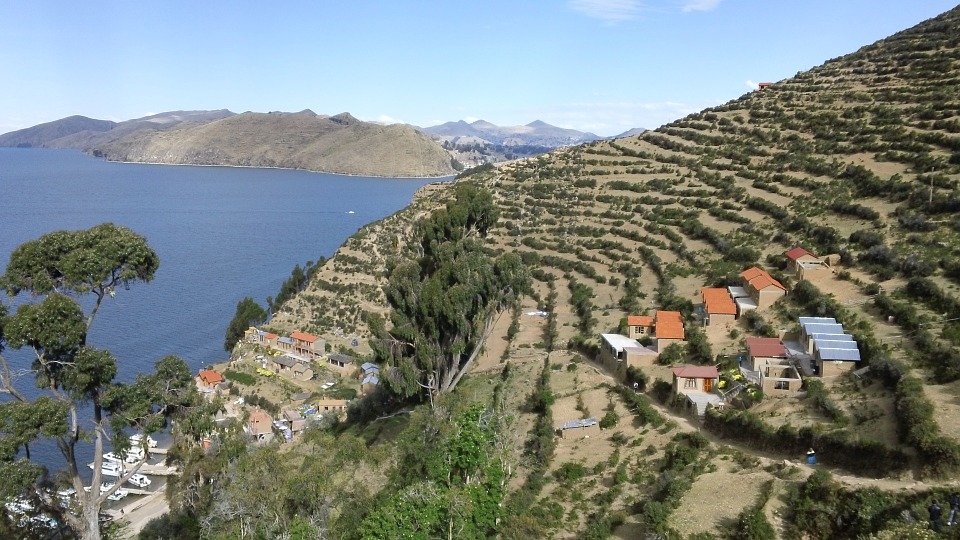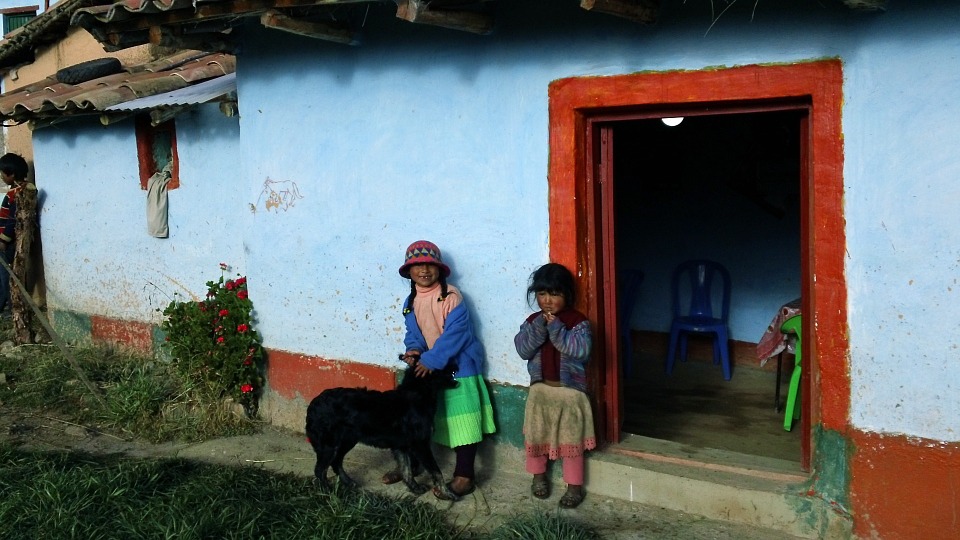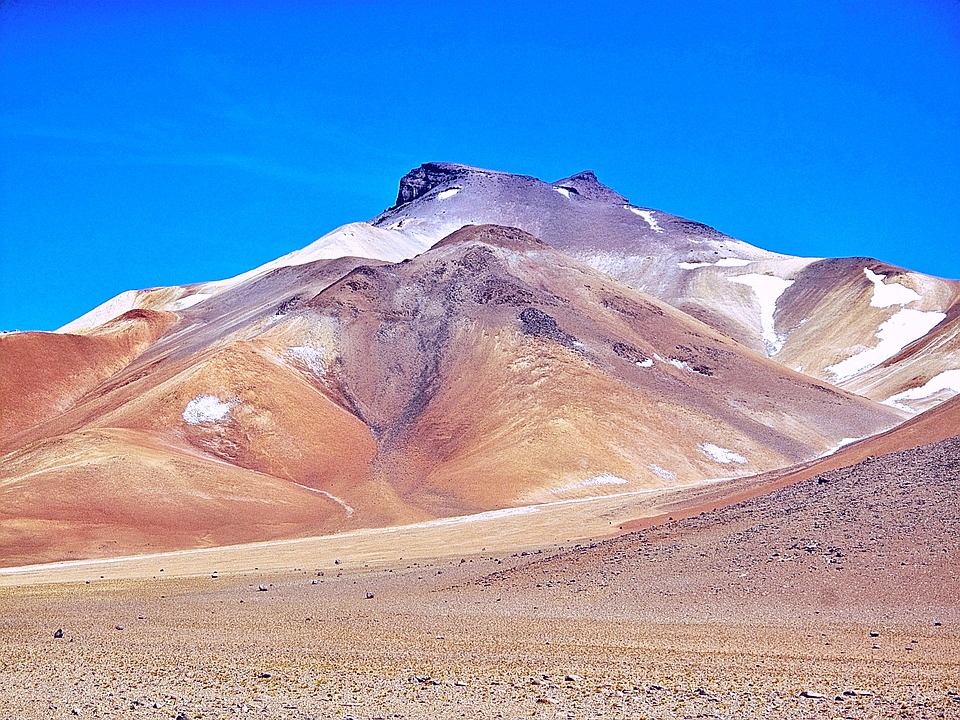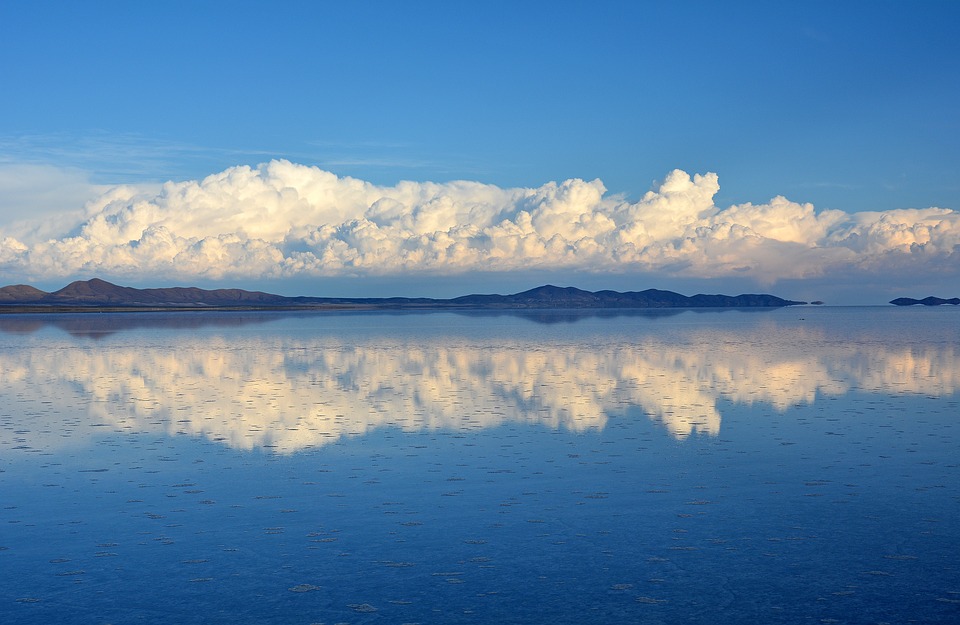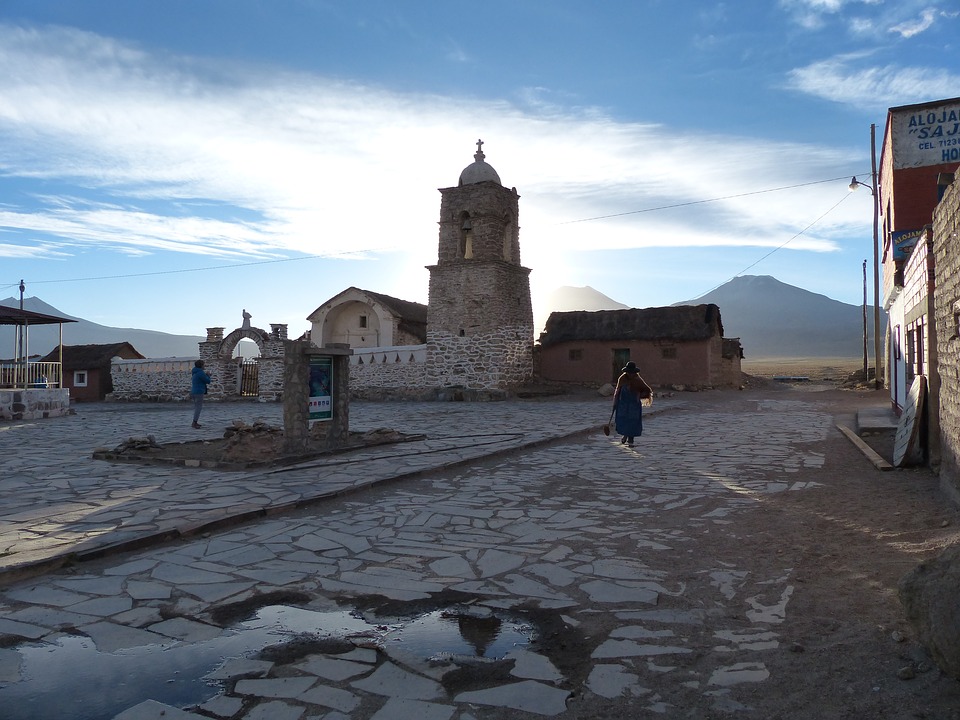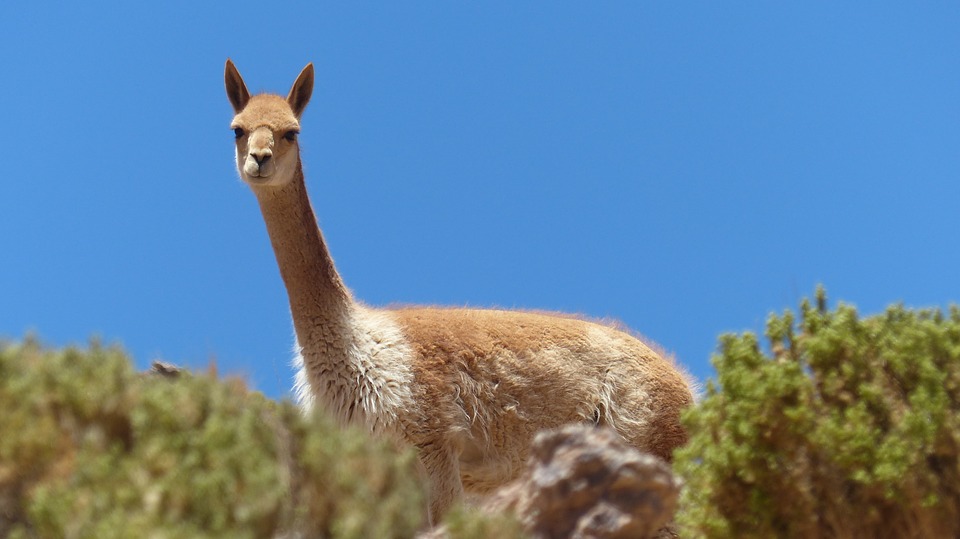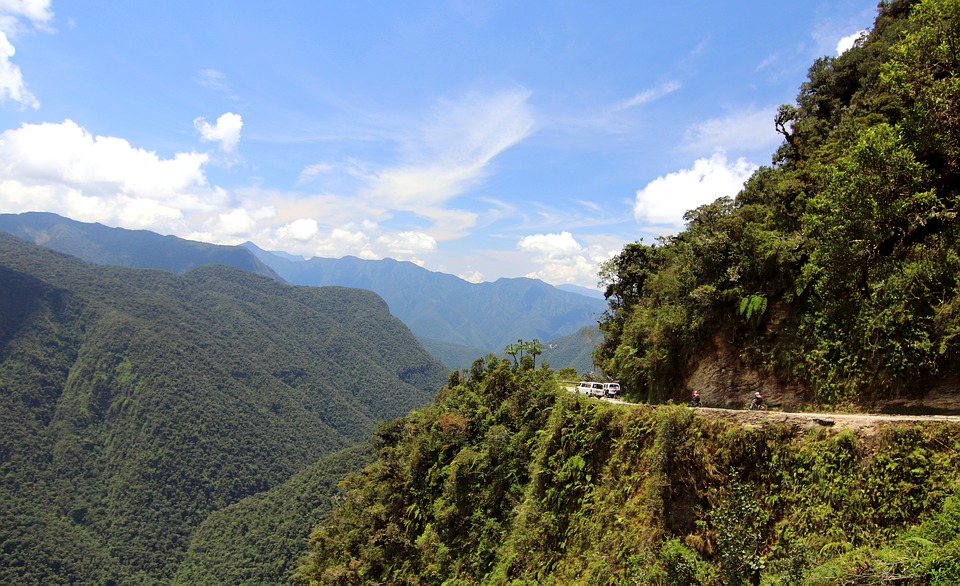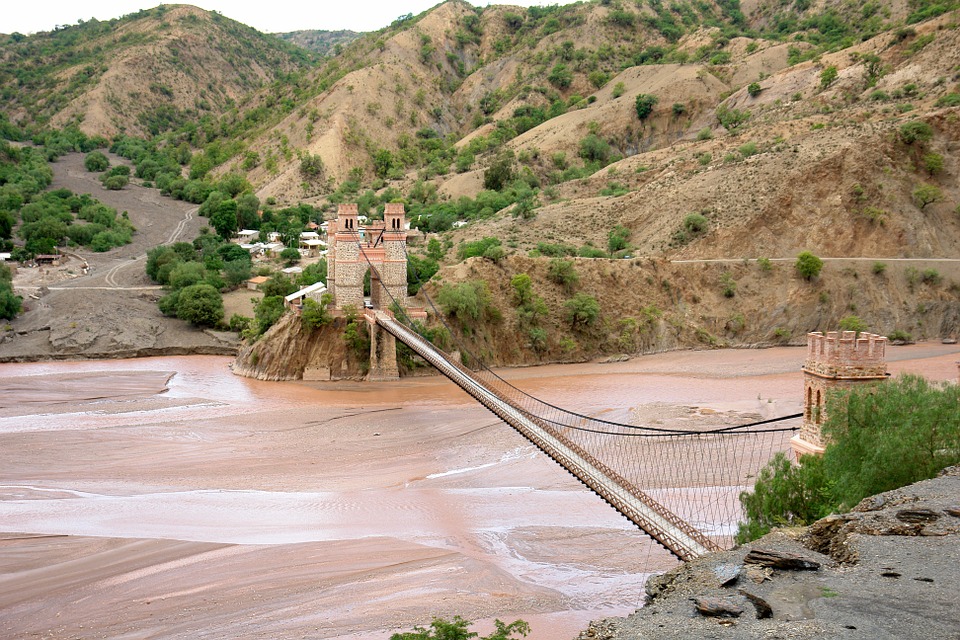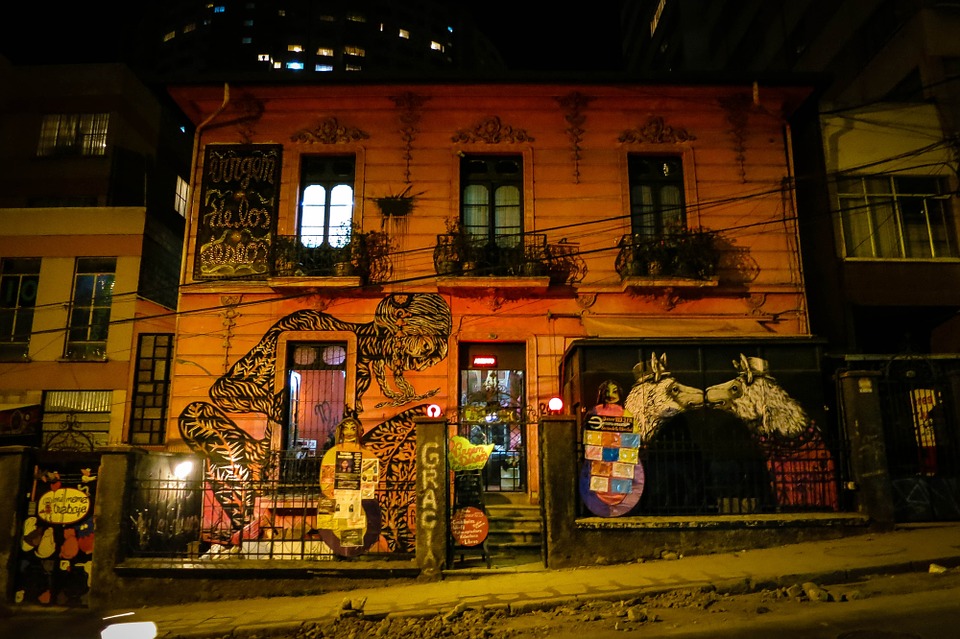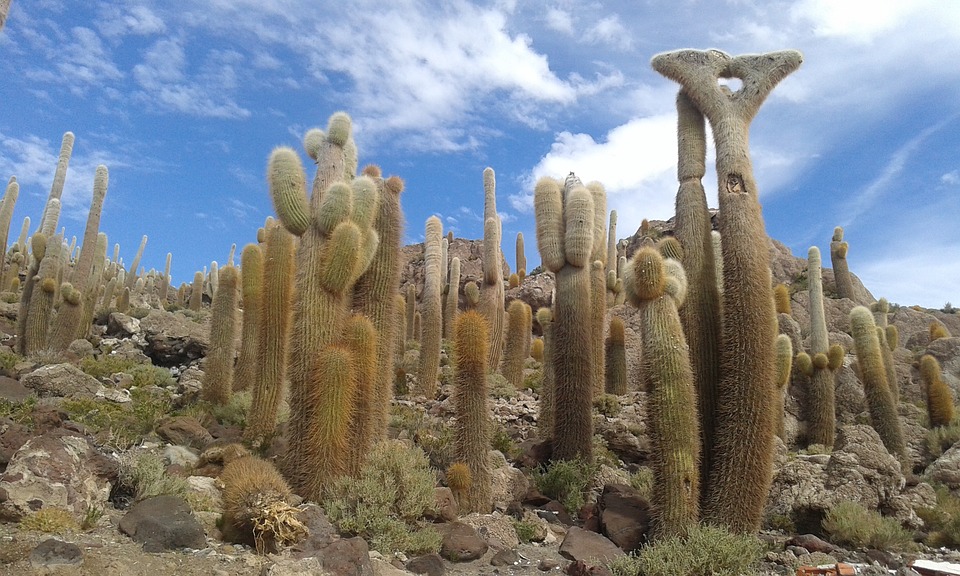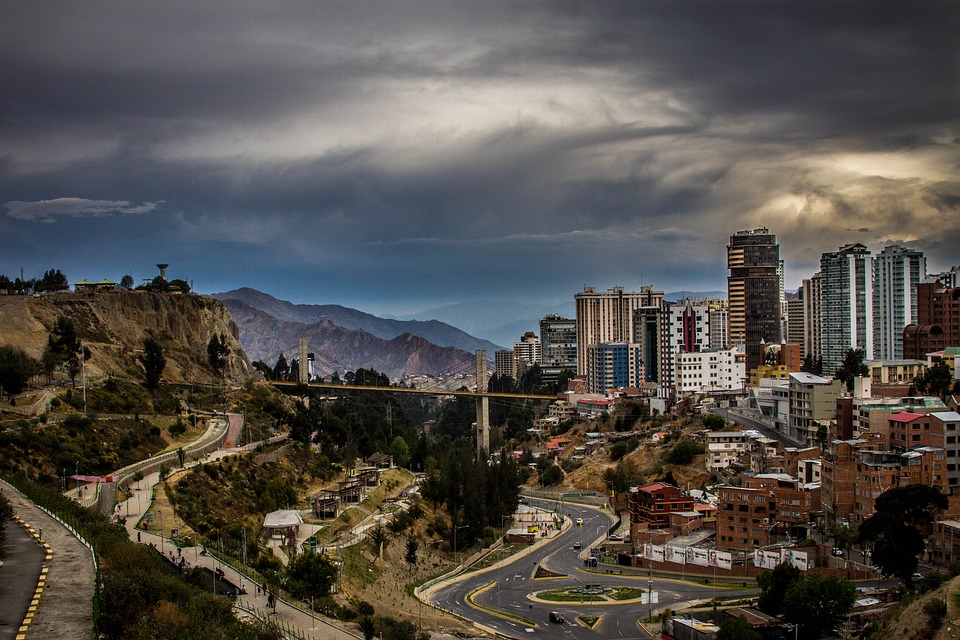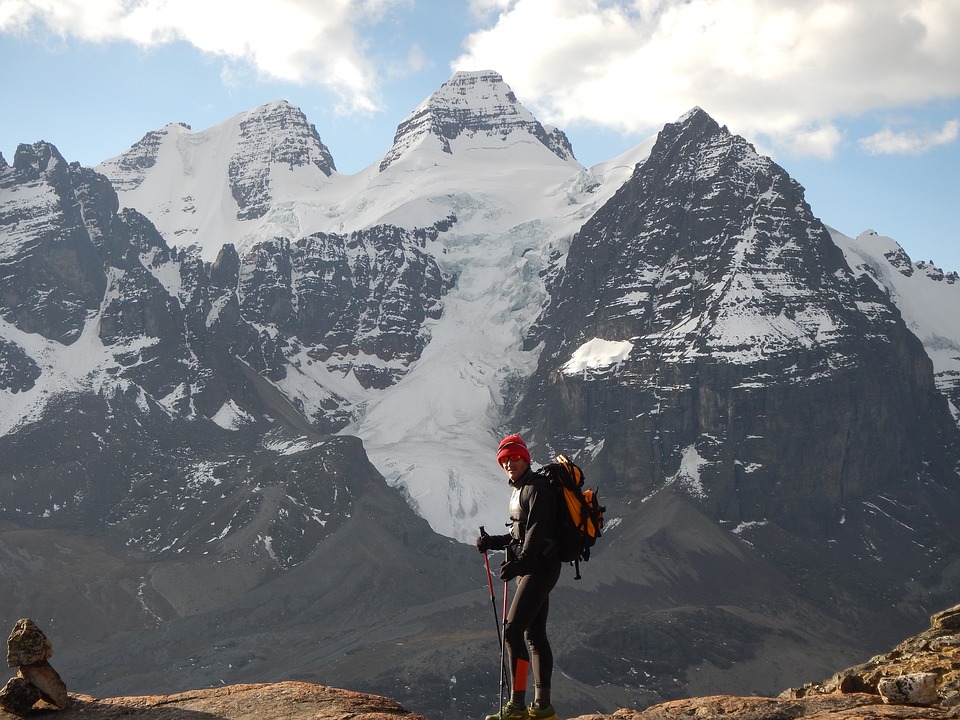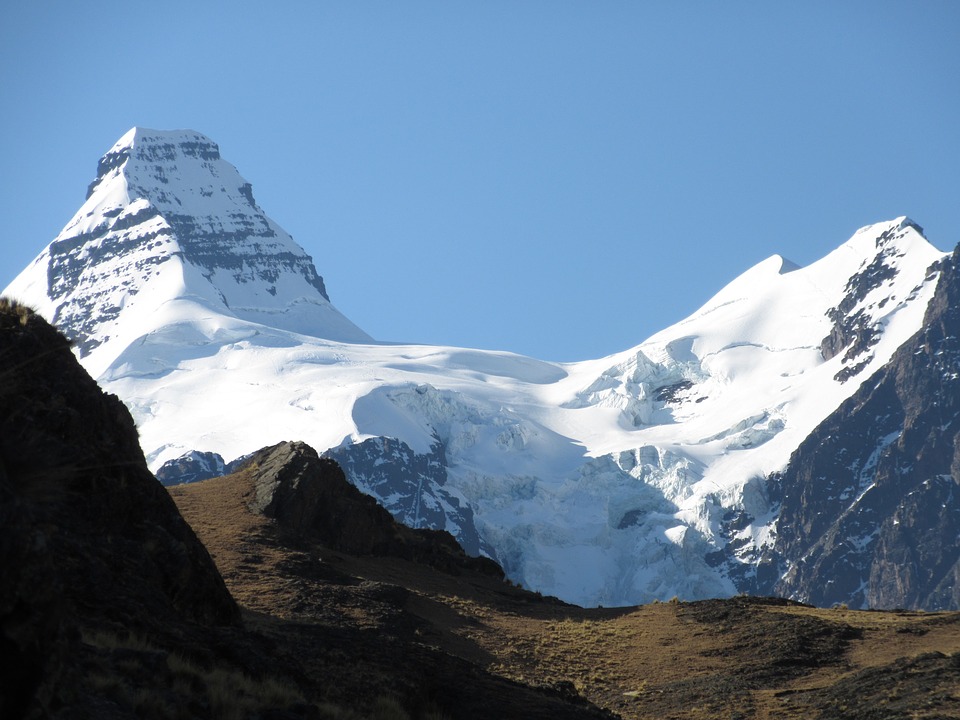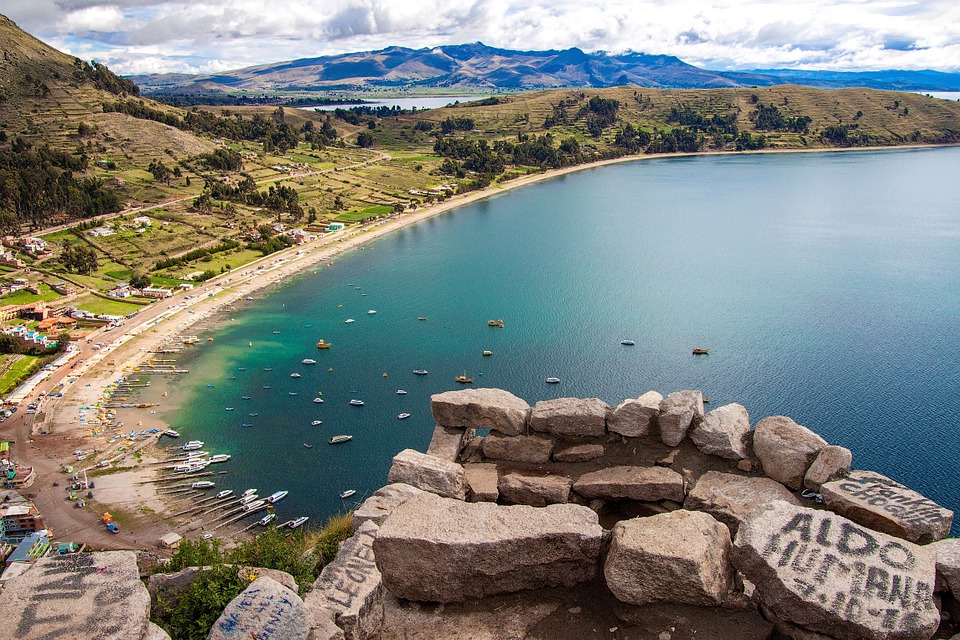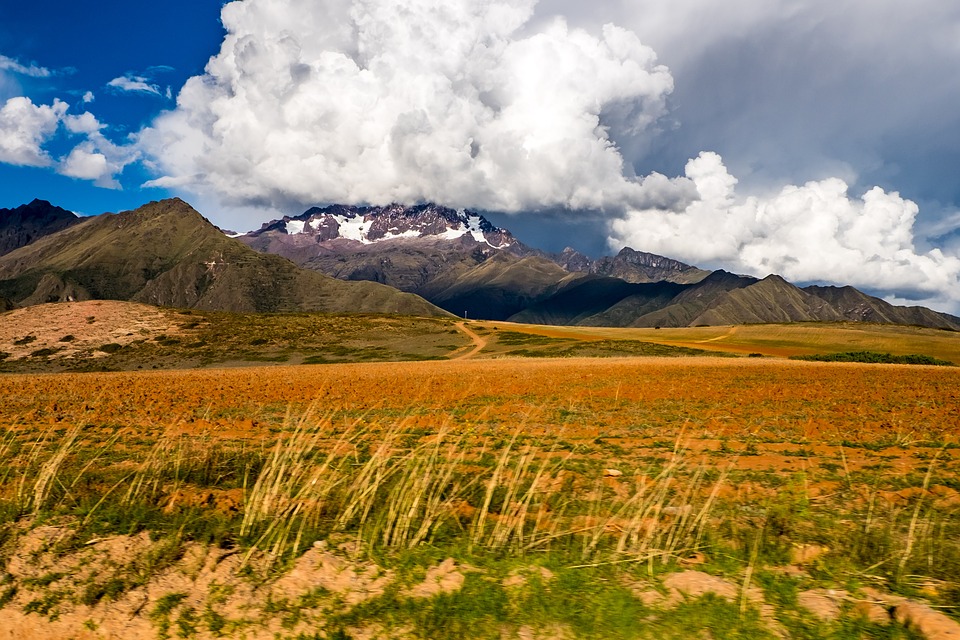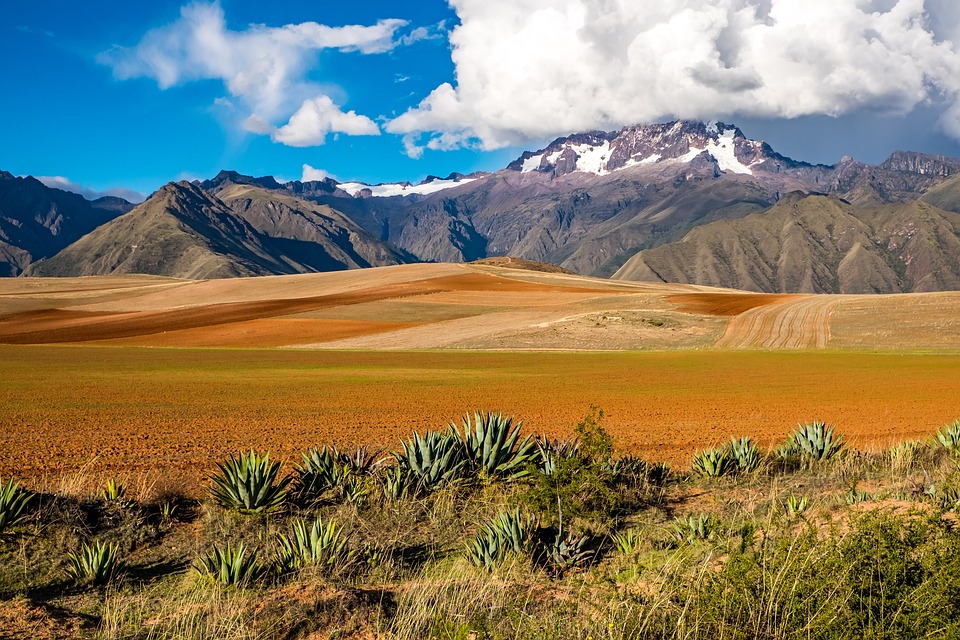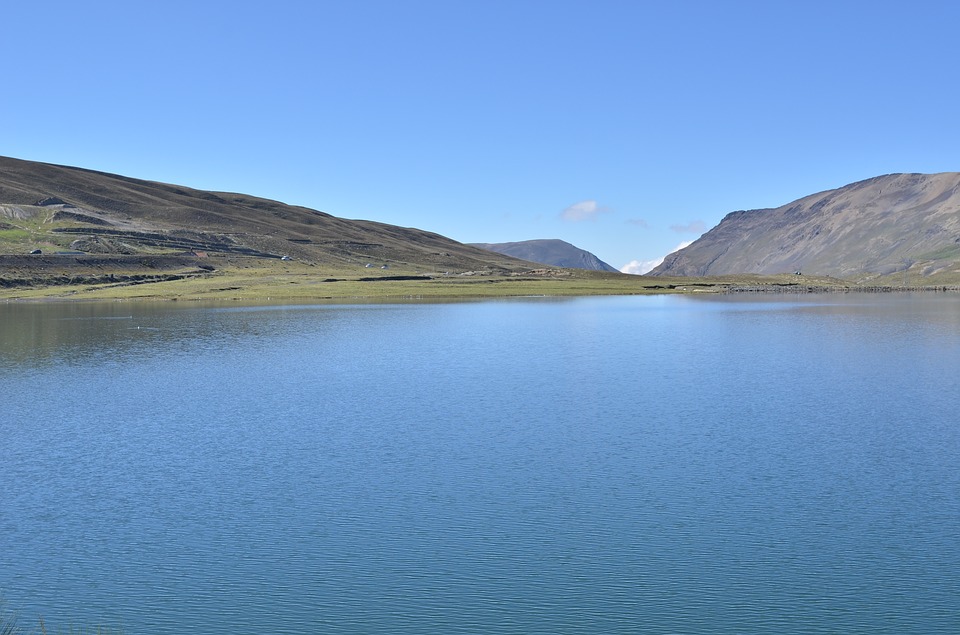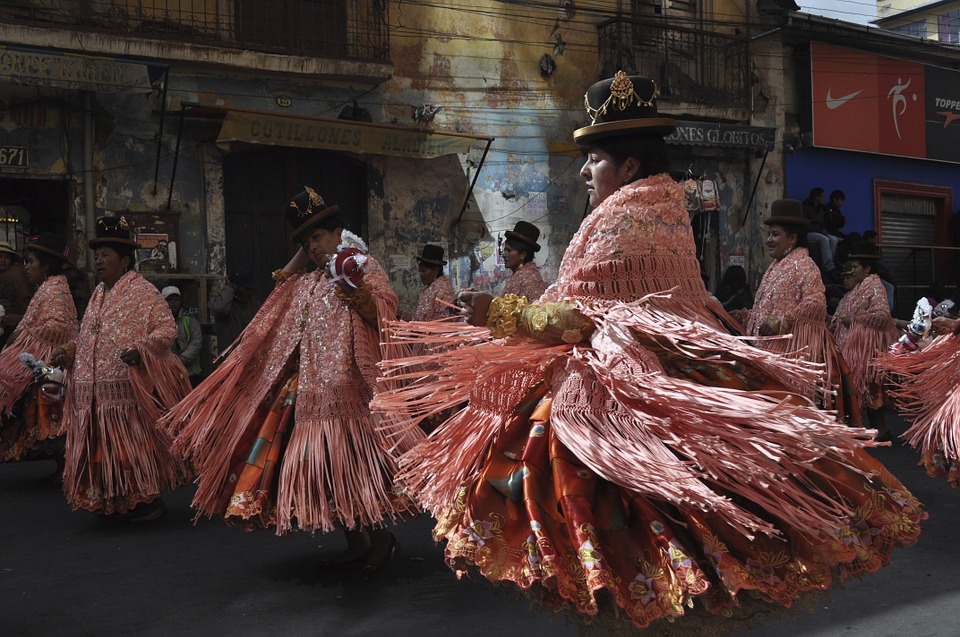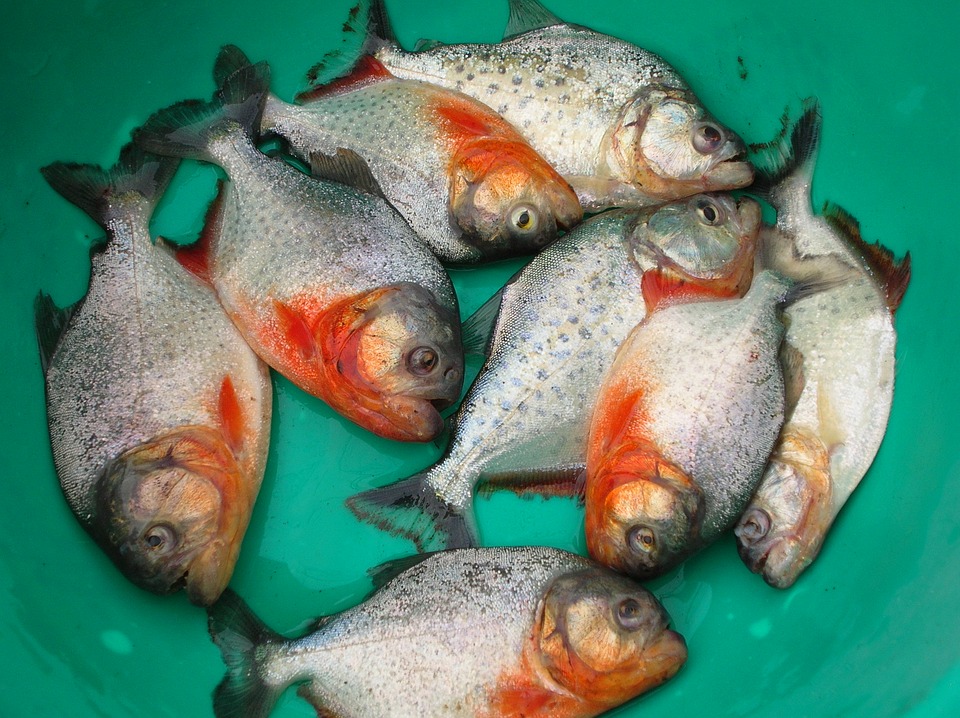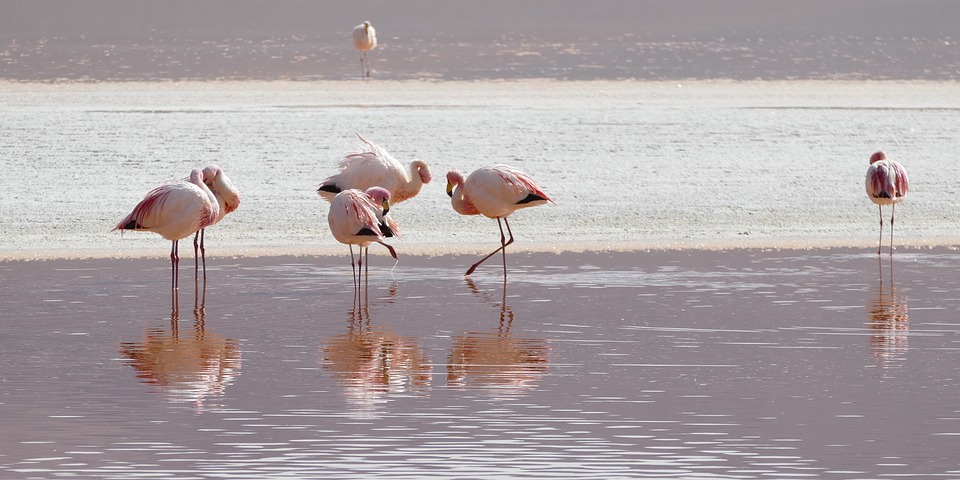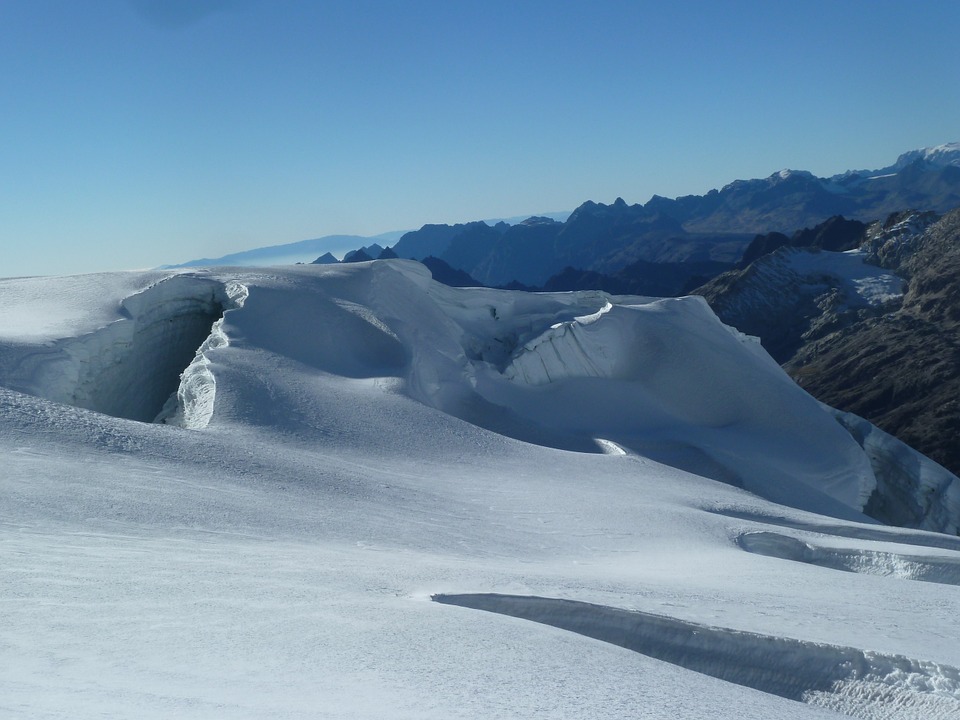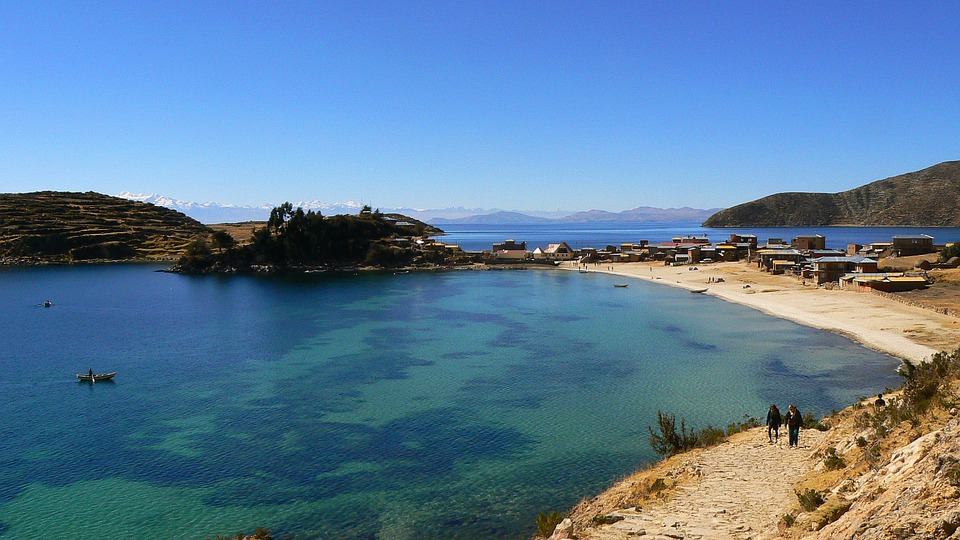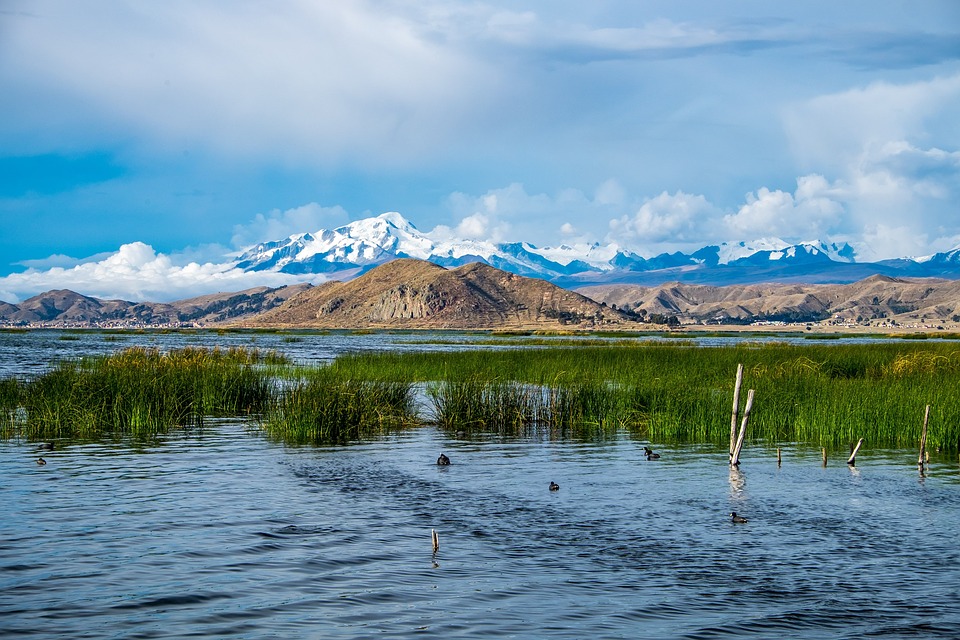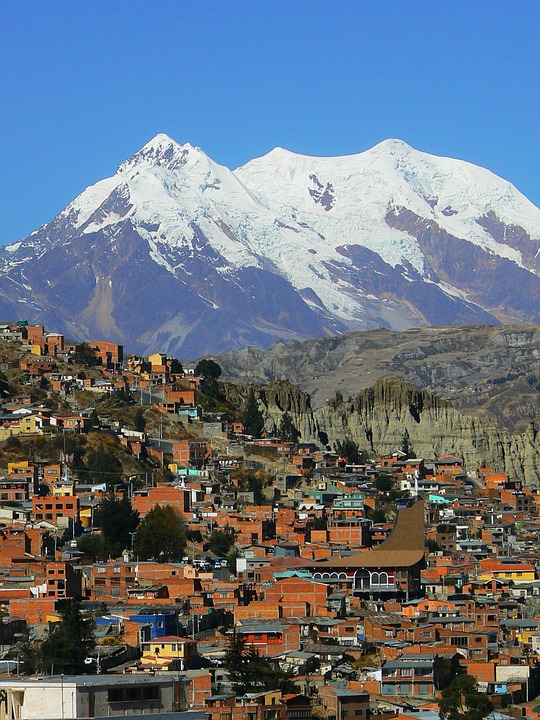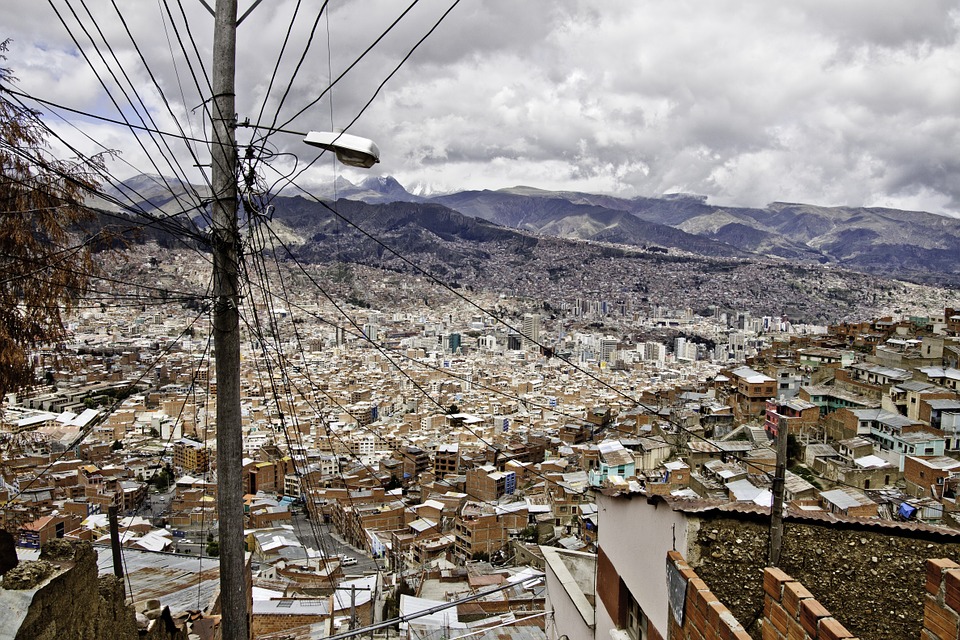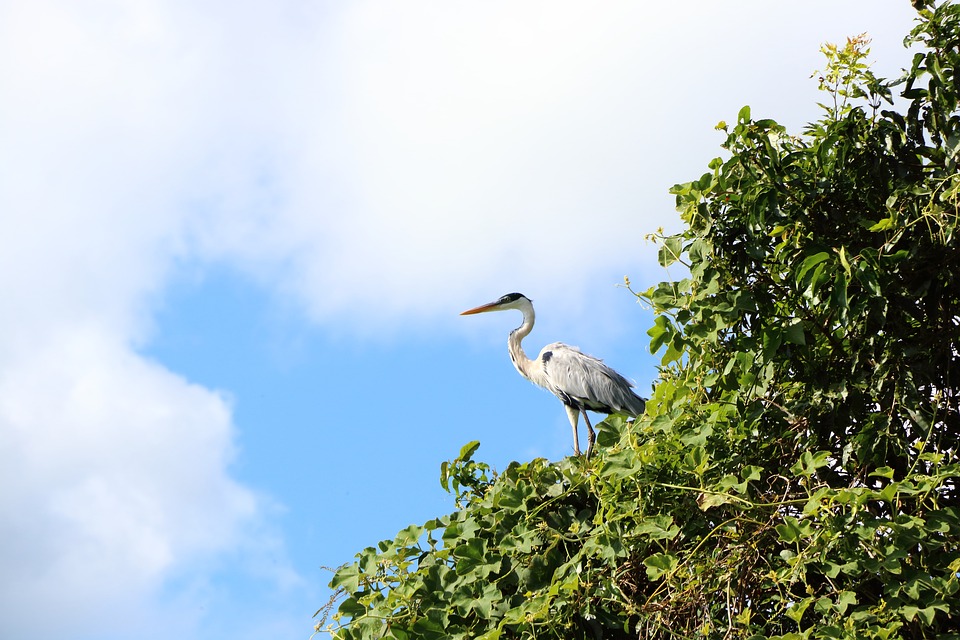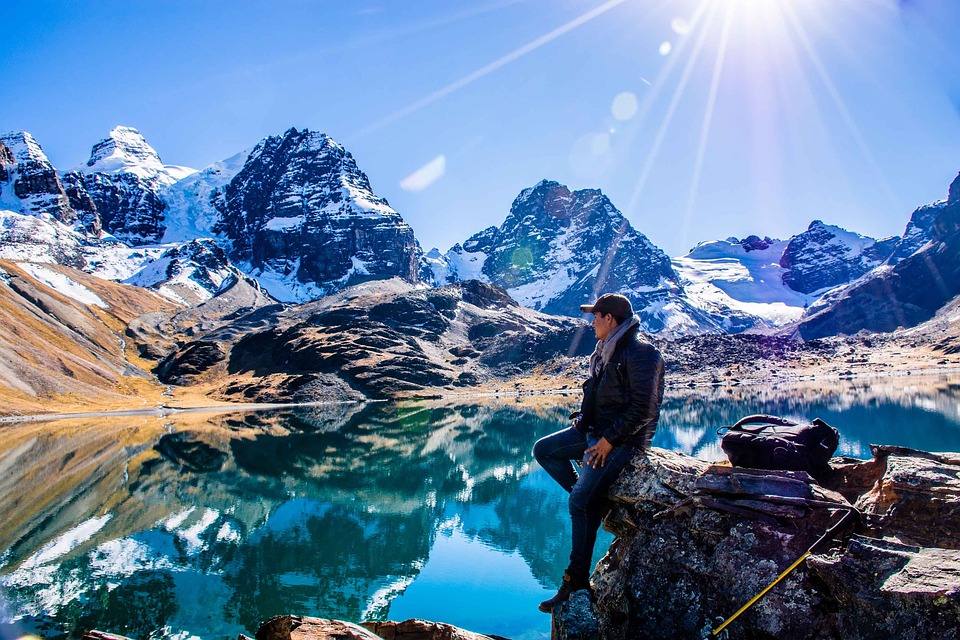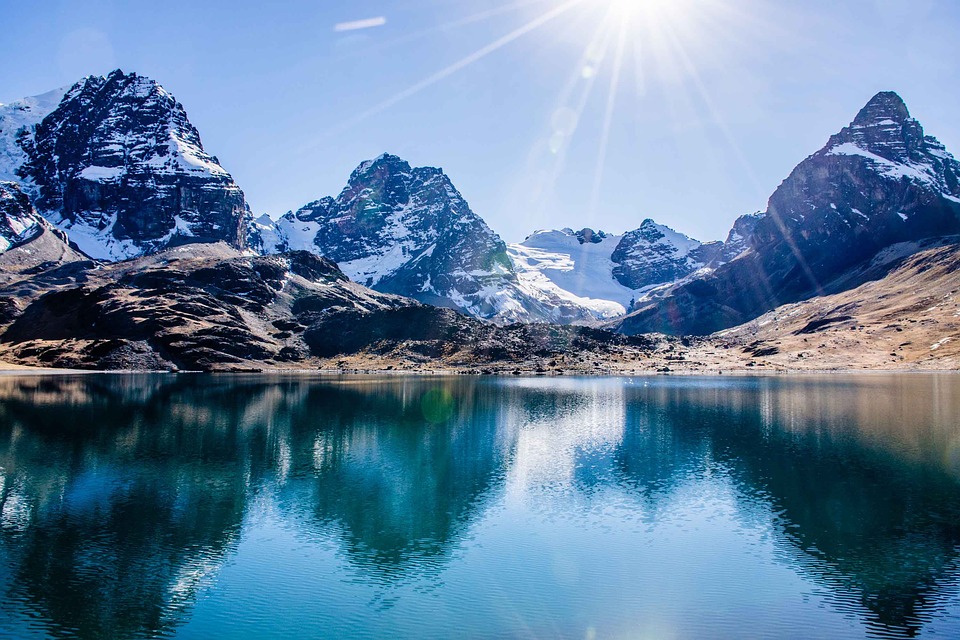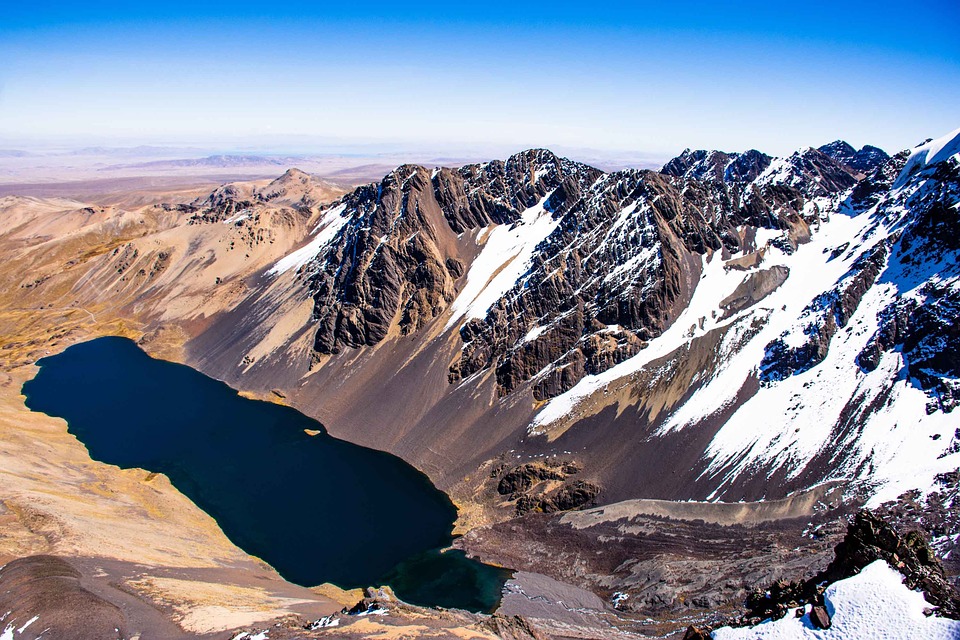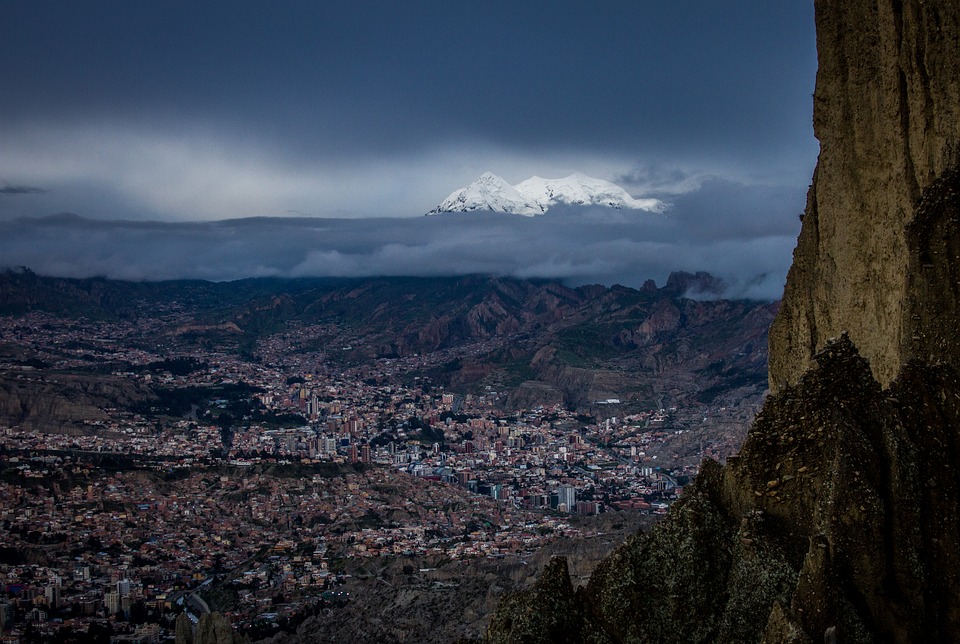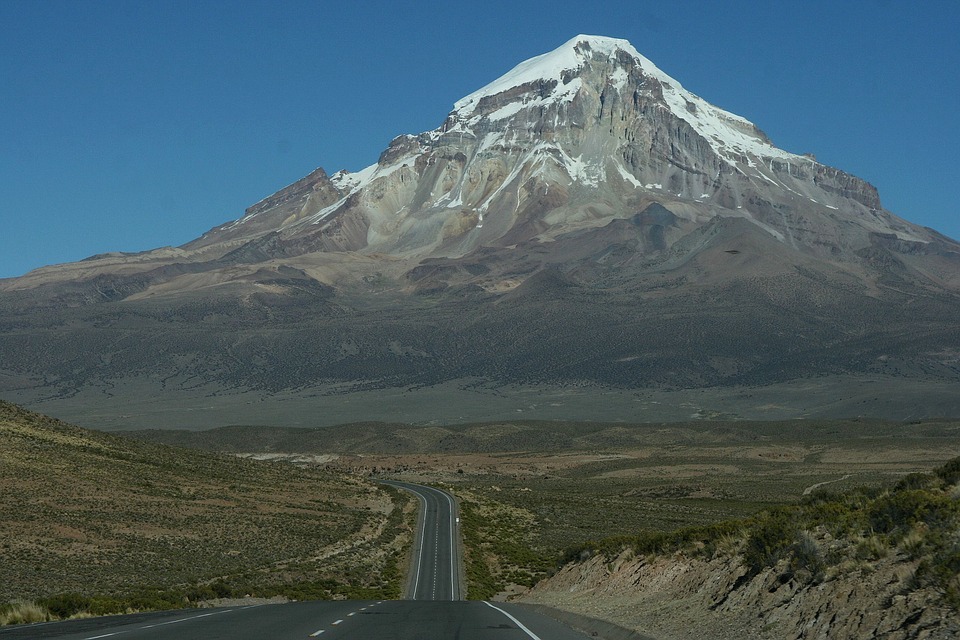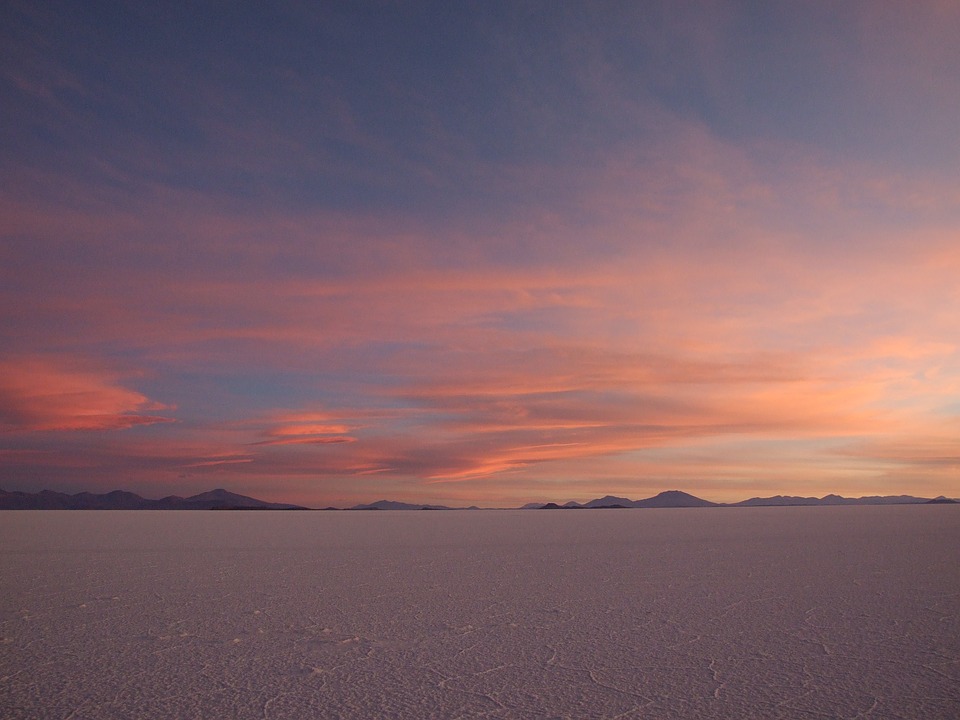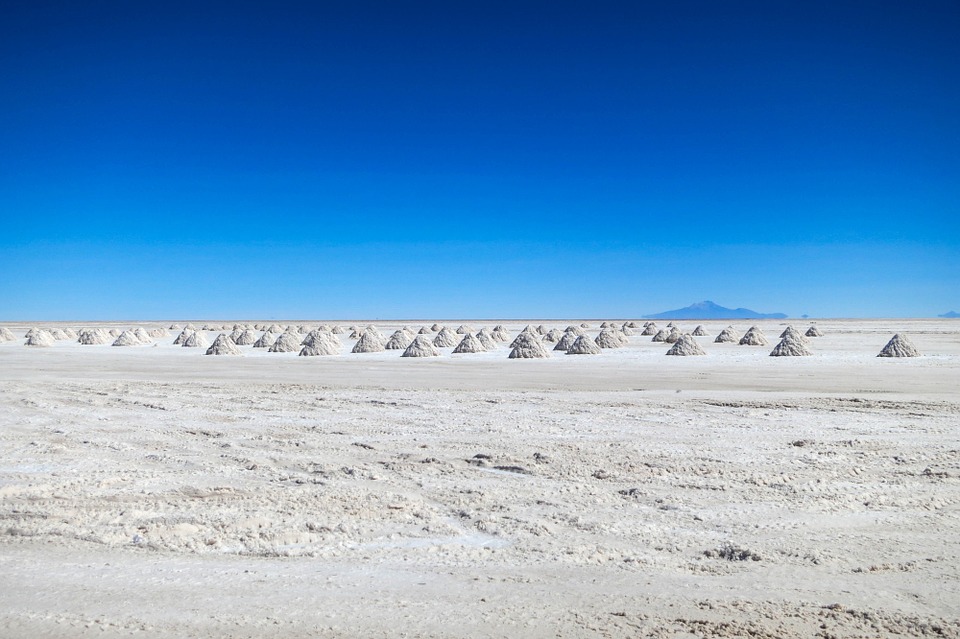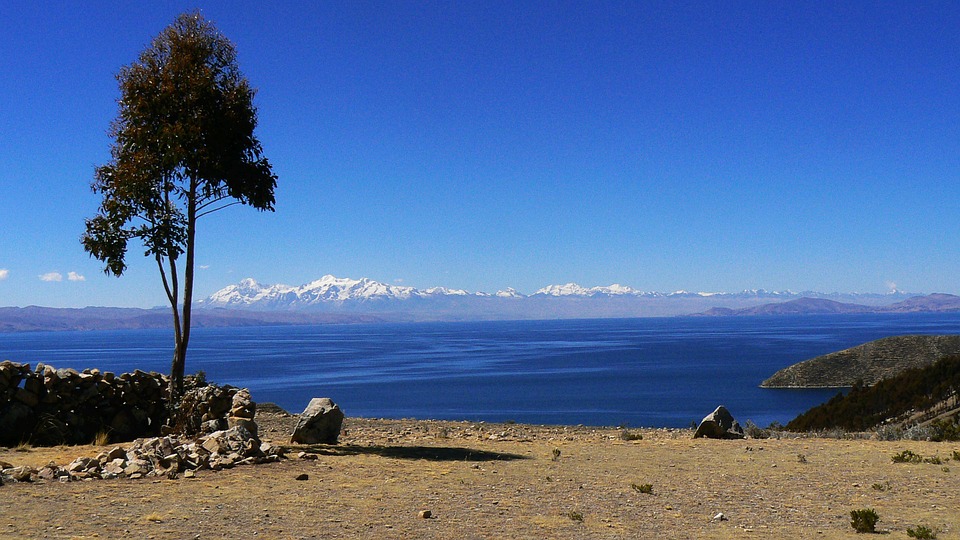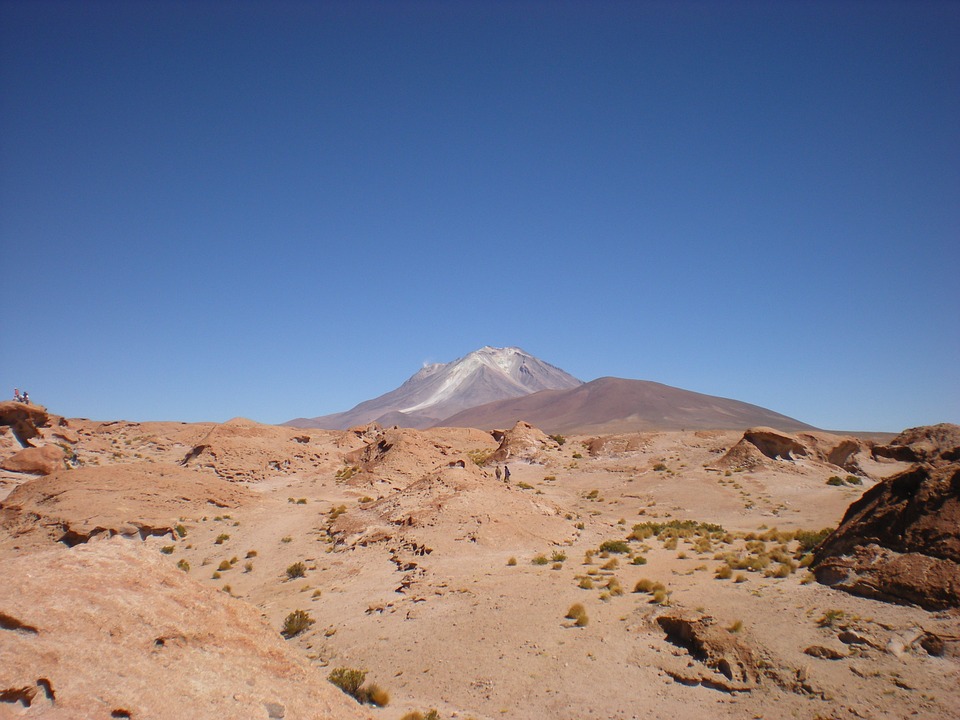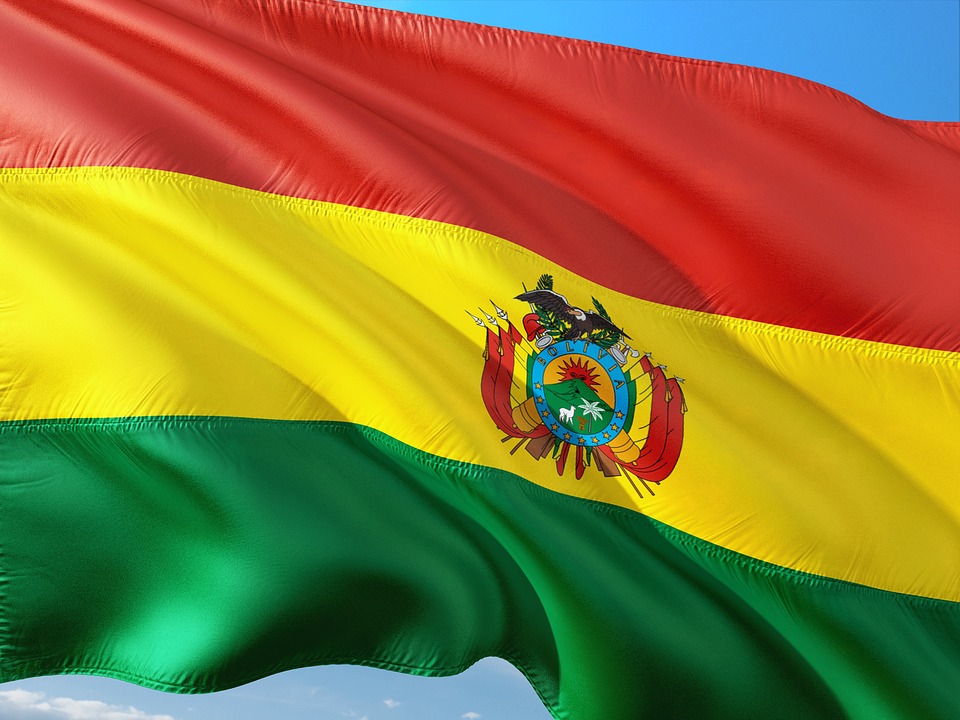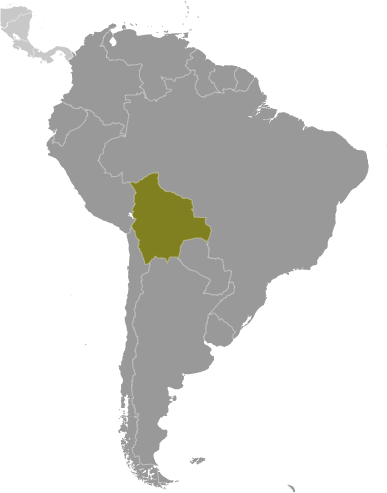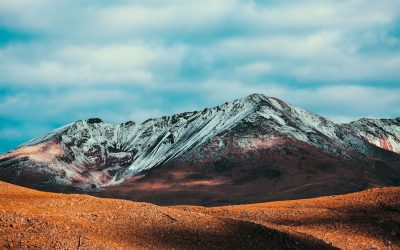Bolivia
(Estado Plurinacional de Bolivia (Plurinational State of Bolivia))

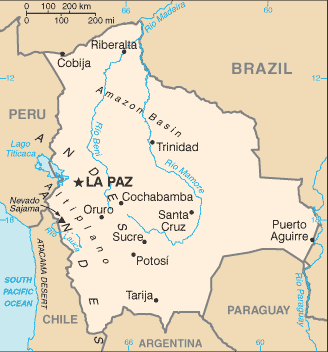
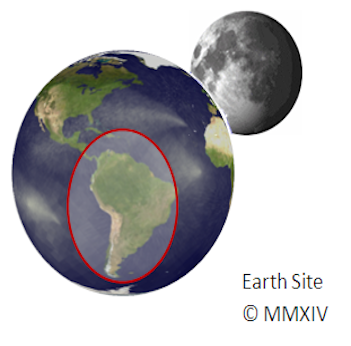
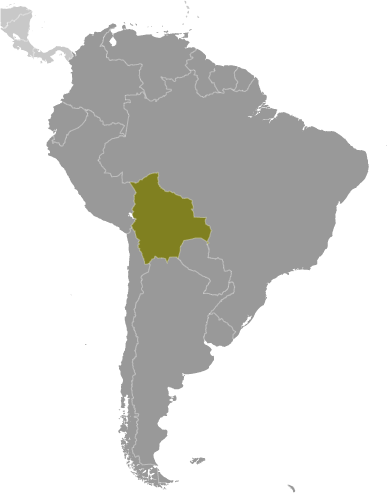
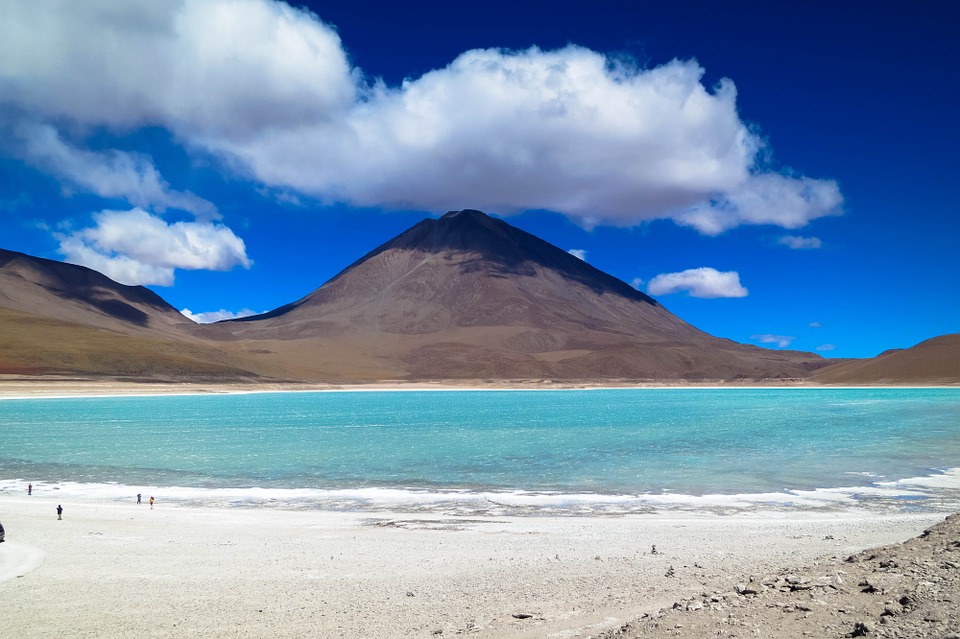
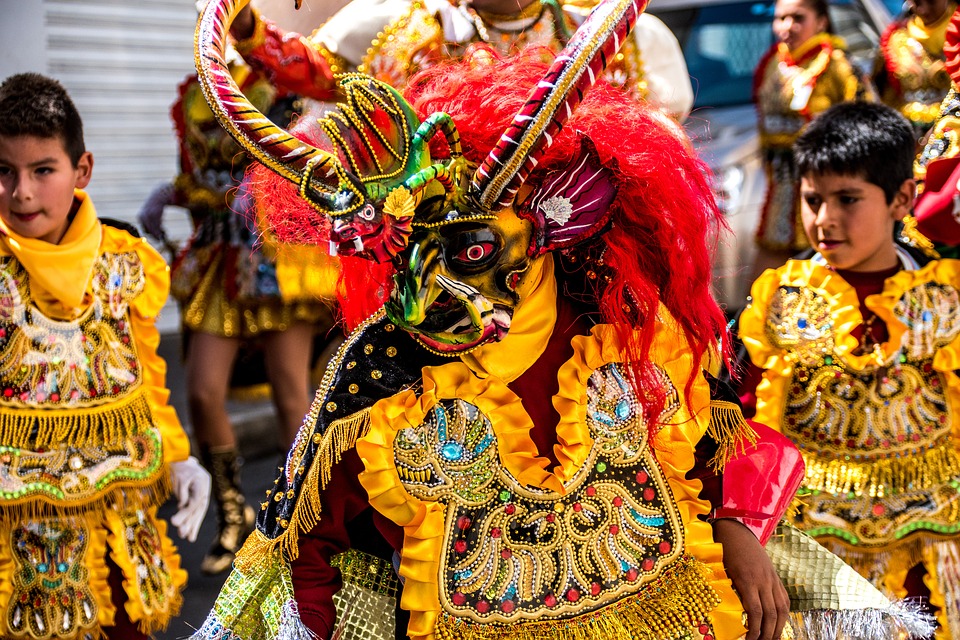
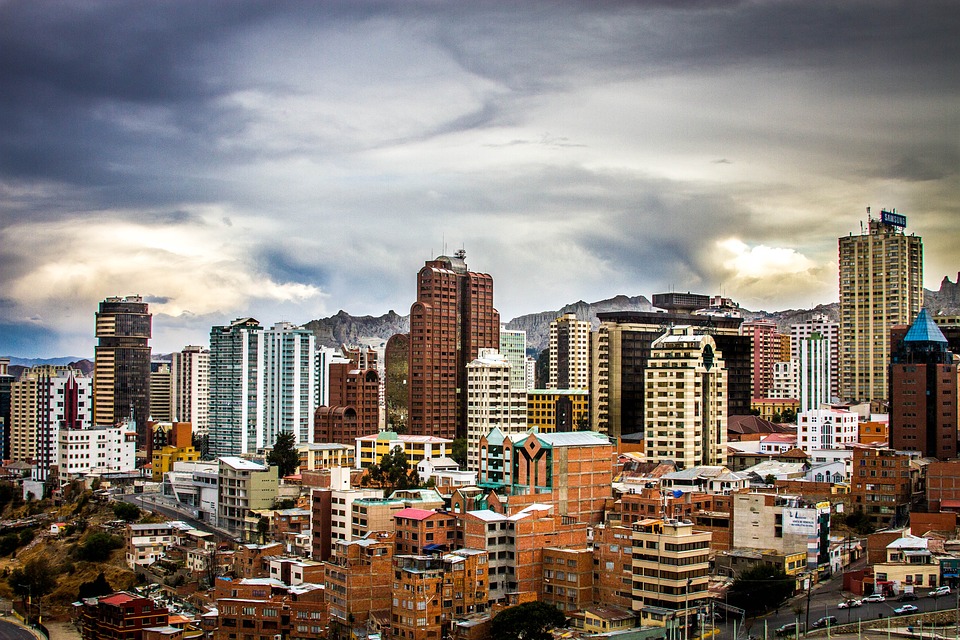
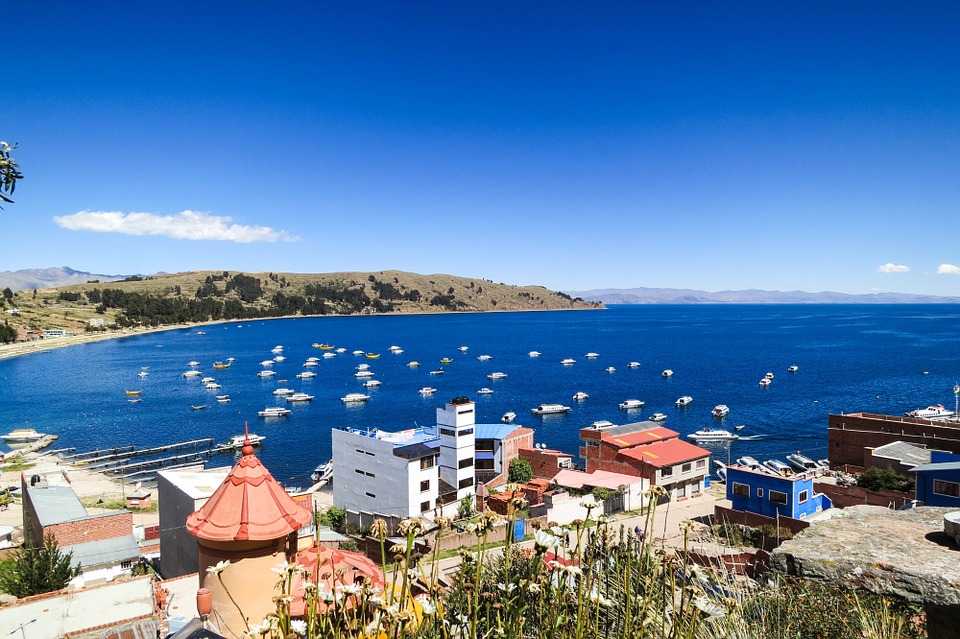
Capital of Bolivia : La Paz (Administrative), Sucre (Constitutional)
Population (Estimated July 2012): 10,290,003
Area: 1,098,581 km2 or 424,164 mi2
Currency: Boliviano (Bs)
Official Language: Spanish, Quechua, Aymara with several native languages also spoken.
Political Information: Unitary Presidential Republic
Official Religion: No Official Religion (approximately of 95% the population is Roman Catholic and 5% are Protestant)
Highest Mountain: Nevado Sajama at 6,542m or 21,463ft
GDP Official Exchange Rate (OER is more precise at gauging a countries economic power)
(Estimated 2011): $24.4 billion (US$) or £14.64 billion (GBP)
GDP (OER) Per Capita (per member of the population estimated 2011): (US$) or (GBP)
GDP Purchasing Power Parity (PPP is good for gauging living conditions and use of resources but not as accurate as OER. This data has been calculated based on the sum value of all goods and services produced in the country valued at prices prevailing in the United States)
(Estimated 2011): $51.46 billion (US$) or £30.876 billion (GBP)
GDP (PPP) Per Capita (per member of the population estimated 2011): $4,800 (US$) or £2,880 (GBP)
Time Zone: -4:00
Counties/Provinces/States: (departments or departamentos) Beni, Chuquisaca, Cochabamba, La Paz, Oruro, Pando, Potosi, Santa Cruz, Tarija
Leaders:President Juan Evo MORALES Ayma (since 22 January 2006); Vice President Alvaro GARCIA Linera (since 22 January 2006)
Sources: CIA World Fact Book, Encyclopaedia Britannica.
Bolivia, located in the heart of South America, is a country known for its rich cultural heritage and diverse landscapes. With a population of over 11 million people, Bolivia is home to a variety of ethnic groups, each with their own unique traditions and languages. From the towering peaks of the Andes to the lush rainforests of the Amazon Basin, Bolivia offers visitors a chance to explore a wide range of natural wonders. In this article, we will delve into the geography, history, economy, society, and culture of Bolivia, highlighting its many facets and complexities.
Geography and Climate: From the Andes to the Amazon Rainforest
Bolivia’s geography is incredibly diverse, with landscapes ranging from snow-capped mountains to dense rainforests. The Andes mountain range runs through the western part of the country, reaching heights of over 6,000 meters. This region is known as the Altiplano, a high plateau that stretches across much of Bolivia. The Altiplano is home to Lake Titicaca, the highest navigable lake in the world, as well as numerous indigenous communities.
To the east of the Andes lies the Amazon Basin, a vast expanse of tropical rainforest that covers over half of Bolivia’s territory. This region is incredibly biodiverse, with thousands of plant and animal species found nowhere else on Earth. The Amazon Basin is also home to indigenous communities who have lived in harmony with their environment for centuries.
In contrast to the Andes and the Amazon Basin, the Chaco region in southern Bolivia is characterized by its dry and arid climate. This region is sparsely populated and is known for its vast plains and unique wildlife.
Bolivia’s climate varies greatly depending on altitude and location. The highlands experience cold winters and mild summers, while the lowlands have a tropical climate with high temperatures and heavy rainfall. These diverse climate zones have a significant impact on Bolivia’s flora and fauna, with different species adapted to thrive in each region.
History and Politics: The Evolution of Bolivia’s Identity and Governance
Bolivia has a rich history that dates back thousands of years. Before the arrival of the Spanish in the 16th century, the region was home to several advanced civilizations, including the Tiwanaku and Inca empires. These civilizations left behind impressive architectural ruins and a legacy that is still celebrated today.
During the colonial period, Bolivia was part of the Viceroyalty of Peru and was known for its rich silver mines. The Spanish exploited these mines and forced indigenous people to work in harsh conditions. However, the indigenous population also played a crucial role in Bolivia’s struggle for independence, which was achieved in 1825.
Since gaining independence, Bolivia has experienced periods of political instability and military rule. In recent decades, indigenous movements have gained prominence and have fought for greater representation and rights. Evo Morales, an indigenous leader, became Bolivia’s first indigenous president in 2006 and held office until 2019.
Bolivia’s political history has been marked by challenges in establishing stable governance and addressing social inequalities. The country has made significant progress in recent years, but there are still ongoing struggles to ensure equal representation and opportunities for all citizens.
Economy and Industry: Agriculture, Mining, and Tourism in Bolivia
Bolivia’s economy is diverse, with agriculture, mining, and tourism playing significant roles. The country is known for its agricultural products such as quinoa, soybeans, coffee, and coca leaves. Agriculture employs a large portion of the population, particularly in rural areas.
Mining is another important sector of Bolivia’s economy, with the country being rich in natural resources such as tin, silver, zinc, and lithium. The mining industry has faced challenges in terms of environmental impact and labor conditions, but efforts are being made to promote sustainable practices and improve working conditions.
Tourism is a growing industry in Bolivia, with visitors drawn to the country’s natural and cultural attractions. The Salar de Uyuni, the world’s largest salt flat, is a popular destination, as are the colonial cities of Sucre and Potosi. Bolivia’s rich indigenous culture and vibrant festivals also attract tourists from around the world.
Bolivia has made efforts to promote sustainable development and reduce poverty. The government has implemented social programs aimed at improving access to education, healthcare, and basic services. However, challenges remain in terms of infrastructure, inequality, and economic diversification.
Society and Culture: Languages, Ethnicities, and Traditions in Bolivia
Bolivia is a multicultural country with a diverse population that includes indigenous peoples, mestizos (people of mixed indigenous and European ancestry), and people of European descent. The country recognizes 36 indigenous languages, with the most widely spoken being Quechua, Aymara, and Guarani. Spanish is also an official language.
Each ethnic group in Bolivia has its own unique traditions and customs. Traditional music and dance play a significant role in Bolivian culture, with festivals such as Carnaval de Oruro showcasing vibrant costumes and lively performances. Indigenous communities also maintain their own spiritual beliefs and practices, often blending elements of Catholicism with traditional rituals.
Despite its cultural richness, Bolivia faces social challenges such as inequality and discrimination. Indigenous communities have historically been marginalized and have faced discrimination in areas such as education, healthcare, and employment. Efforts are being made to address these issues and promote inclusivity and equal rights for all citizens.
Education and Healthcare: Challenges and Progress in Bolivia
Bolivia’s education system faces challenges in terms of access, quality, and infrastructure. Many rural areas lack schools and qualified teachers, making it difficult for children to receive a quality education. The government has implemented programs to improve access to education, particularly in rural areas, but there is still work to be done.
Similarly, Bolivia’s healthcare system faces challenges in terms of access and quality of care. Many rural communities lack access to healthcare facilities and trained medical professionals. The government has implemented initiatives to improve healthcare services, particularly in remote areas, but there is a need for continued investment and infrastructure development.
Infrastructure and Transportation: From the Salt Flats to the Yungas Road
Bolivia’s transportation infrastructure is diverse and includes roads, railways, and airports. The country has made efforts to improve connectivity and accessibility, particularly in remote areas. However, challenges remain, particularly in terms of road conditions and maintenance.
One of Bolivia’s most famous transportation challenges is the Yungas Road, also known as “Death Road.” This narrow and winding road connects La Paz to the Yungas region and is known for its dangerous conditions. Despite its reputation, the road attracts thrill-seeking tourists who enjoy mountain biking down its steep slopes.
Another unique transportation feature in Bolivia is the Uyuni Salt Flats. This vast expanse of salt is a popular tourist destination and can be traversed by 4×4 vehicles. The salt flats offer a surreal landscape that attracts photographers from around the world.
Food and Drink: Bolivian Cuisine and Beverages to Try
Bolivian cuisine is diverse and reflects the country’s multicultural heritage. Traditional dishes include salteñas (a type of baked pastry filled with meat or vegetables), pique macho (a hearty dish with beef, sausage, and vegetables), and silpancho (a breaded meat dish served with rice, potatoes, and a fried egg).
Bolivia is also known for its beverages, including chicha (a fermented corn drink), singani (a grape brandy), and mate de coca (a tea made from coca leaves). These beverages are often enjoyed during social gatherings and celebrations.
Food plays an important role in Bolivian culture and is often shared with family and friends. Traditional recipes are passed down through generations, preserving the country’s culinary traditions and promoting a sense of community.
Tourism and Adventure: Exploring Bolivia’s Natural and Cultural Wonders
Bolivia offers a wide range of tourist destinations, from bustling cities to remote natural wonders. La Paz, the country’s capital, is known for its vibrant markets, colonial architecture, and stunning views of the surrounding mountains. The city is also a gateway to the Andes and offers opportunities for trekking and mountaineering.
Lake Titicaca, located on the border between Bolivia and Peru, is another popular tourist destination. The lake is known for its crystal-clear waters and floating islands, which are home to indigenous communities who maintain their traditional way of life.
One of Bolivia’s most famous attractions is the Salar de Uyuni, the world’s largest salt flat. This otherworldly landscape stretches as far as the eye can see and offers visitors a chance to take unique perspective-bending photographs. The nearby Eduardo Avaroa Andean Fauna National Reserve is also worth exploring, with its geysers, hot springs, and diverse wildlife.
Bolivia’s natural beauty also provides opportunities for adventure tourism. Trekking in the Cordillera Real mountain range, mountain biking down the Yungas Road, and rafting in the rivers of the Amazon Basin are just a few examples of the adrenaline-pumping activities available in Bolivia.
The country has made efforts to promote sustainable tourism and protect its natural and cultural heritage. Community-based tourism initiatives have been established to ensure that local communities benefit from tourism activities while preserving their traditions and environment.
Challenges and Opportunities: Bolivia’s Future in the Global Context
Bolivia faces various challenges in terms of economic development, social inequality, and political stability. The country’s economy relies heavily on natural resource extraction, which can have negative environmental and social impacts. There is a need for diversification and sustainable development to ensure long-term growth and reduce poverty.
Bolivia also faces social challenges, including inequality and discrimination. Indigenous communities continue to fight for their rights and representation, while women and marginalized groups face barriers to education, healthcare, and employment. Efforts are being made to address these issues, but there is still work to be done.
Despite these challenges, Bolivia has opportunities for growth and development. The country’s natural resources, including lithium reserves, present opportunities for economic diversification and renewable energy production. Bolivia’s cultural richness and natural beauty also make it an attractive destination for tourism and international investment.
In the global context, Bolivia plays a significant role in regional integration efforts and has strong relationships with neighbouring countries such as Brazil, Argentina, and Peru. The country is also a member of international organizations such as the United Nations and the Organization of American States.
As Bolivia looks towards the future, it must navigate these challenges and seize opportunities for sustainable development and inclusive growth. By harnessing its cultural richness, natural resources, and diverse population, Bolivia has the potential to become a thriving nation that celebrates its heritage while embracing progress.
History of Bolivia
Bolivia, a landlocked country in South America, has a rich and complex history that has shaped its present-day society and culture. From its pre-Columbian origins to the Spanish conquest and colonization, the struggle for independence, and the modern political landscape, understanding Bolivia’s past is crucial for understanding its present. This article will provide a comprehensive overview of Bolivia’s history, highlighting key events and their significance in shaping the nation. Summary Bolivia’s indigenous people have a rich history that dates back to the Pre-Columbian era. Spanish conquest and colonial rule had a significant impact on Bolivia’s culture and society. Bolivia’s struggle for independence was marked by political and social upheaval. The Chaco War was a costly conflict that had lasting effects on Bolivia’s economy and politics. The National Revolution of 1952 brought about significant social and political change in Bolivia. Pre-Columbian Era: The Origins of Bolivia’s Indigenous People Before the arrival of the Spanish, Bolivia was home to a diverse range of indigenous groups, each with their own unique cultures, traditions, and ways of life. The most prominent indigenous groups in Bolivia include the Aymara, Quechua, Guarani, and many others. These groups had developed sophisticated agricultural systems and had a deep connection to the land and natural resources. The Aymara people, for example, were known for their advanced knowledge of agriculture and their ability to cultivate crops at high altitudes. They built terraced fields and irrigation systems to maximize their agricultural output. The Quechua people, on the other hand, were skilled weavers and traders who established vast networks of trade routes throughout the Andean region. The land and natural resources...
Climate Zones of Bolivia: Different climate regions Of Bolivia
Bolivia, located in the heart of South America, is a country known for its diverse geography and climate. From the towering peaks of the Andes Mountains to the vast expanse of the Amazon rainforest, Bolivia is home to a wide range of climate zones. Understanding these climate zones is crucial for both residents and visitors alike, as it allows for better preparation and planning when it comes to activities, agriculture, and conservation efforts. Summary Bolivia has a diverse range of climate zones, including tropical lowlands, temperate highlands, high-altitude zones, cold puna regions, subtropical Yungas, semi-arid Chaco, and humid Amazon Basin. The tropical lowlands are hot and humid, with temperatures averaging around 30°C and high levels of rainfall. The Andean highlands have a temperate climate, with cooler temperatures and lower humidity levels. The high-altitude Altiplano region experiences cold temperatures and strong winds, with temperatures dropping below freezing at night. The Puna region is the coldest climate zone in Bolivia, with temperatures often below freezing and little rainfall. Tropical Lowlands: The Hot and Humid Climate The tropical lowlands of Bolivia, also known as the Oriente, are characterized by a hot and humid climate. This region encompasses the Amazon Basin and stretches across the northern and eastern parts of the country. The average temperature in this climate zone ranges from 25 to 30 degrees Celsius (77 to 86 degrees Fahrenheit), with high levels of humidity throughout the year. Rainfall in the tropical lowlands is abundant, with an average annual precipitation ranging from 1,500 to 3,000 millimeters (59 to 118 inches). This makes it one of the wettest regions in Bolivia. The combination...
Terrain and Topography of Bolivia: mountains, valleys, and plains.
Bolivia, located in the heart of South America, is a country known for its diverse and stunning landscapes. From the towering peaks of the Andes Mountains to the lush valleys of the Yungas and the vast plains of the Chaco, Bolivia’s terrain and topography are as varied as they are breathtaking. Understanding Bolivia’s geography is crucial for a variety of reasons, including agriculture, transportation, and conservation efforts. Summary Bolivia’s terrain and topography is diverse and varied, ranging from high mountains to lowland plains. The Andes Mountains are the backbone of Bolivia, running through the country from north to south. The high plateau is a landscape of extremes, with harsh weather conditions and unique flora and fauna. The Yungas region is known for its lush valleys and cloud forests, while the Chaco is a vast lowland plain. Bolivia’s river systems are the lifeblood of the country, providing water for agriculture and hydroelectric power. The Andes Mountains: Bolivia’s Backbone The Andes Mountains, which run through several South American countries including Bolivia, are a defining feature of the country’s landscape. These majestic peaks not only provide a stunning backdrop but also play a vital role in Bolivia’s economy and culture. The Andes Mountains are home to some of Bolivia’s highest peaks, including Mount Illimani, Mount Sajama, and Mount Huayna Potosi. The High Plateau: A Landscape of Extremes The high plateau, also known as the Altiplano, is a unique landscape that stretches across much of western Bolivia. This vast expanse of high-altitude plains is characterized by its extreme conditions, including low oxygen levels and harsh weather. Despite these challenges, the high plateau is...
Political Boundaries of Bolivia: Provinces, Districts, or Historical Boundaries.
Bolivia, located in the heart of South America, is a landlocked country with a rich and diverse cultural heritage. Understanding Bolivia’s political boundaries is crucial for comprehending the country’s governance, society, and international relations. This article aims to provide a comprehensive overview of Bolivia’s political boundaries, including its provinces, districts, municipalities, and indigenous territories. By delving into the history, significance, challenges, and future prospects of these boundaries, we can gain a deeper understanding of Bolivia’s political landscape. Summary Bolivia is divided into 9 departments, which are further divided into 112 provinces and 339 municipalities. Each department has its own capital city and is governed by a departmental governor and departmental assembly. Bolivia’s districts are administrative subdivisions within provinces, responsible for local governance and public services. Bolivia’s political boundaries have been shaped by colonialism, wars, and territorial disputes with neighboring countries. Political boundaries in Bolivia are crucial for the distribution of resources, representation, and recognition of indigenous communities. Bolivia’s Provinces: A Breakdown Provinces are administrative divisions within a country that are typically larger than districts or municipalities. In Bolivia, there are nine provinces, each with its own unique characteristics. For example, La Paz is the largest province in terms of population and is home to the country’s administrative capital. It is known for its stunning landscapes, including the famous Lake Titicaca and the Andes Mountains. On the other hand, Pando is the smallest province in terms of both population and area. It is located in the northern part of the country and is known for its rich biodiversity and natural resources. Understanding Bolivia’s Districts Districts are smaller administrative divisions within...
Bolivia: Natural Resources, Mines, and Mining
Natural Resources of Bolivia: How Mines, Fuel, and Lithium Drive the Economy of Bolivia Bolivia is rich in natural resources, and its mines play a pivotal role in the economy of Bolivia. From vast lithium reserves in the Salar de Uyuni to historic tin mines and growing natural gas production, the country’s mineral wealth is both a national asset and a global point of interest. This article is worth reading because it explores how Bolivia’s natural resource base shapes its economic growth, geopolitical stance, and future development. You’ll discover how Bolivia’s government manages its mining sector, the challenges it faces, and what lies ahead for one of Latin America’s most resource-rich yet poorest countries. Article Outline What Makes Bolivia Rich in Natural Resources? How Does the Mining Industry Shape the Bolivian Economy? What Role Does Natural Gas Play in Bolivia’s Energy and Export Strategy? Why Is Lithium So Important to Bolivia’s Future? What Is the Salar de Uyuni and Why Does It Matter Globally? How Did Tin Transform Bolivia’s Industrial History? How Does Government Control Affect the Mining Sector? What Are the Environmental and Social Impacts of Mining in Bolivia? How Do Bolivia’s Resources Influence Its Foreign Relations? What’s the Future of Bolivia’s Natural Resource Sector? 1. What Makes Bolivia Rich in Natural Resources? Bolivia is rich in natural resources, ranging from minerals to hydrocarbons. Its unique natural landscape includes mountainous regions packed with metallic mineral deposits and salt flats abundant in lithium resources. Key minerals include tin, silver, zinc, and increasingly, lithium—all vital for global industries. Among Bolivia’s most important natural resources are its vast natural...
Cultural or Historical Sites of Bolivia: Important Cultural Landmarks or Historical Sites In Bolivia
Bolivia is a country rich in cultural heritage and diverse attractions. Located in the heart of South America, it is known for its stunning landscapes, ancient ruins, and vibrant traditions. From the magnificent ruins of Tiwanaku to the mystical charm of Lake Titicaca, Bolivia offers a unique and unforgettable experience for travellers. Summary Tiwanaku ruins offer a glimpse into Bolivia’s pre-Columbian past La Paz’s historic centre showcases Bolivia’s colonial legacy Lake Titicaca is a sacred site for Aymara and Quechua people Oruro’s Carnival is Bolivia’s most spectacular festivity Sucre’s historic buildings are a majestic beauty and Bolivia’s first capital city The Magnificent Ruins of Tiwanaku: A Glimpse into Bolivia’s Pre-Columbian Past Tiwanaku is an archaeological site located near Lake Titicaca in western Bolivia. It was once the capital of a powerful pre-Columbian civilization that thrived from around 300 to 1000 AD. The ruins of Tiwanaku are considered one of the most important archaeological sites in South America and offer a glimpse into Bolivia’s pre-Columbian past. The highlights of the Tiwanaku site include the Akapana Pyramid, which was once a massive stepped pyramid that served as a ceremonial center. The Gate of the Sun is another iconic feature, with intricate carvings depicting various deities and symbols. The site also includes several temples, residential areas, and a museum that houses artifacts found during excavations. The Wonders of La Paz’s Historic Centre: Exploring Bolivia’s Colonial Legacy La Paz, Bolivia’s administrative capital, is home to a historic center that showcases the country’s colonial legacy. The city’s architecture reflects a blend of Spanish colonial and indigenous influences, creating a unique and vibrant atmosphere. Must-see...
Discovering the Wonders of Bolivia: A Journey Through South America’s Hidden Gem
Bolivia, located in the heart of South America, is a country known for its unique and diverse landscape. From the towering peaks of the Andes Mountains to the vast expanse of the Amazon rainforest, Bolivia offers a breathtaking array of natural wonders. Its topography is incredibly varied, with high-altitude plateaus, deep canyons, and shimmering salt flats. This diverse landscape is not only visually stunning but also plays a crucial role in supporting Bolivia’s rich natural and cultural heritage. The importance of Bolivia’s natural and cultural heritage cannot be overstated. The country is home to an incredible array of plant and animal species, many of which are found nowhere else on Earth. The Amazon rainforest in Bolivia is one of the most biodiverse regions in the world, teeming with life and providing vital ecosystem services. Additionally, Bolivia is home to numerous indigenous communities that have inhabited the land for centuries, each with their own unique traditions, languages, and ways of life. Preserving this natural and cultural heritage is not only important for the people of Bolivia but also for the global community. Key Takeaways Bolivia’s diverse landscape offers unique opportunities for adventure and exploration. Indigenous culture is an integral part of Bolivia’s rich heritage and can be experienced through various cultural activities. Bolivia’s national parks and natural wonders are breathtaking and offer a chance to connect with nature. The colonial cities and towns of Bolivia are steeped in history and offer a glimpse into the country’s past. Trekking in Bolivia’s high altitude landscapes can be challenging but rewarding, offering stunning views and a sense of accomplishment. The Rich Cultural Heritage...
